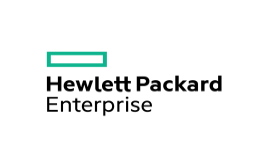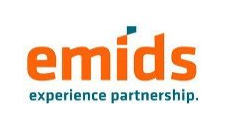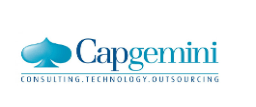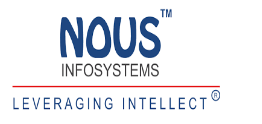For Enquiry Dial 90-350-37-886
Tableau with
Advance Excel + MS-SQL
With Placement
- Globally Recognized Certificate
- Real Time Live Training sessions
- Corporate Trainers with 10+ Years Industry Experience
- Hands On Exposure on Real Time Projects
- Resume and Interview Preparation
- Get 100% Guaranteed Job Support
- Join for Internship Programs and get exposure to work on Industry Projects
- 3 Months Job support after completion of training
- Both Online and Offline trainings available
What is meant by Tableau ?
- Tableau is data visualization and data analytics tool.
- It converts raw data into easily understandable format.
- Tableau tool makes easier for non-technical analysts to convert data into interactive graphics.
- Tableau is a superior than an other tool when it comes to visuals and graphics.
- Tableau can extract data from any database like SQL, Excel, Oracle , MySql etc.
- Tableau can be implemented using C, C++, Java and Python.
Who Can Do This Course ?
- Tableau training can be done by Freshers, Job Seekers and Working Professionals
- MS-SQL and Advance Excel are pre-requisite for Tableau Training hence both are included in the course
- The course is strategically designed to suffice the requirement of current industry requirements
- Freshers will find the course easy to understand as every inch of basic knowledge is covered in it
- Experience people who are willing to learn new technologies will find the course very interesting as all topics are elaborated with live examples and real time assignments
Training Methodology

Tableau with Advance Excel and MS-SQL
Syllabus
Best-in-industry, strategically designed Course Content, Projects, Class Sessions to
accomplish the changing requirement of market
- What is Tableau Tool?
- Importance and Scope of Tableau?
- Tableau compatibility with high level languages
- Tableau Installation
- Role of Tableau in current industry
- Why MS-SQL and Advance Excel are required for Tableau?
- Defining names for cells, Range of Data
- Working with Functions in Excel
- Conditional Formatting using Formulas
- Data Validation
- Working with Excel Tables
- Data Sorting
- Data Filtering
- Working with Subtotal
- Working with Pivot Tables and Pivot Charts
- Working with Lookup Functions
- VLOOKUP
- Match
- Index, Offset etc.
- Indirect
- Statistical Functions
- Moving Average
- Rank and Percentile
- What if Analysis Tools
- Goalseek
- Solver Scenario manager
- Data Tables
- Protect worksheets (Full and partial Protection)
- Creating templates
- Protect workbooks
- Recording Macros and Using it
Module 1 – Introduction to RDBMS
- Explain the concept of data and database.
- Describe the approaches to Data Management.
- Define a Database Management System and list its benefits.
- Explain the different database models.
- Define and explain RDBMS.
- Describe entities and tables and list the characteristics of tables.
- List the differences between a DBMS and RDBMS.
Module 2 – Database Files and Database Engine Architecture
- Describe SQL Server and state its features.
- Identify the various components under SQL Server.
- Describe two-tier, three-tier and multi-tier models.
- List the system databases under SQL Server .
- State the uses of primary, secondary and log files.
- Explain briefly the physical database architecture.
- Explain briefly the relational database engine architecture.
Module 3 – Database’s, File File-Groups.
- Describe the system and user-defined databases in SQL Server .
- Outline the key features of the Adventure Works sample database.
- Describe how to add file groups and transaction logs.
- List types of database modifications and describe how to drop a database.
Module 4 –Sql Statements (Data Query Language)
- Understanding Select Statement
- Filter Columns, use Expressions, Alias Names
- Usage of Top, Distinct, Null etc. keywords
- Using String and Arithmetic Expressions
- Exploring Where Clause
- Relational Operators
- Logical Operator
- Between
- IN
- Sorting data using Order By clause
- Using Column Names
- Using Column Index
- Based on Multiple Columns
Module 5 — Function is a set of Transact-SQL
- Aggregate Functions
- Count, Sum, Min, Max, Avg Group By and Having Clause
- Group by Clause
- Having Clause
- Using Group By with Rollup and Cube
- Conversion Functions
- Date Functions
- Mathematical Functions
- System Functions
Module 6 — Function is a set of Transact-SQL
- Windows Functions
- Window Aggregate Functions
- Window Ranking Functions
- Writing Queries with PIVOT and UNPIVOT
- Working with Grouping Sets
Module 7 – Multi-Table Queries
- Describe joins.
- Describe the various types of joins.
- Inner Join
- Outer Join
- Self-Join
- Explain subqueries.
- Single Row Subquery
- Multi row Subquery
- Multi column Subquery
- Co-Related Sub Queries
- Set Operators using UNION, EXCEPT and INTERSECT operators.
Module 8 – Data Definition Language (DDL)
- Create Table
- Constraints
- Primary Key
- Unique
- Not Null
- Check
- Default
- Implement Constraint
- Column Level Constraint
- Table Level Constraint
- Alter Command
- Add, Drop column using Alter Table
- Add, Drop Constraint using Alter Table
- Drop table
Module 9 – Data Manipulation Language (DML)
- Insert a record to Table
- Insert a record only to selected Columns
- Update Command
- Delete Command
- Truncate table Command
- Understand the difference between
- Delete, Drop & Truncate Command.
Module 10 – Introduction to Indexes
- Introduction to Indexes
- Types Of Index
- Clustered
- Non-Clustered
- Unique
- Composite
- Commands to create Index
- Create Index using SSMS
Module 11 – Implementing Views
- Introduction to Views
- Defining Advantages of Views
- Creating, Altering, Dropping Views
- Modifying data through Views
- Simple view, Complex Views
Module 12 – Introducing Stored Procedures
- Introduction to stored procedures
- Benefits of Stored Procedures
- System Stored Procedures
- Extended Stored Procedures
- User defined Stored Procedures
- Create and execute user defined stored procedures
- Understand Variables
- Local Variables
- System global Variables
- Stored Procedures with Parameters
Module 12 – More on Stored Procedures
- Return Output from Stored Procedure using return keyword
- Return Output from Stored Procedure using Parameters
- Input–Output and Optional Parameters
- Viewing information
- Modifying Stored Procedures
- Dropping Stored Procedures
- Exception Handling in MS SQL
- @@ERROR function
- RAISERROR statement returns the user-defined error message
Module 13 – Introduction to Triggers
- Introduction to Triggers
- Constraints vs Triggers
- Understand Inserted and Deleted Tables
- Creating DML Triggers
- Insert Trigger
- Update Trigger
- Delete Trigger
- Working with Sets
- Sorting
- Ascending
- Descending
- Default
- Creating Groups
- Data Types in Tableau
- Parameters
- Database Calculations
- Aggregate Functions
- Numeric Functions
- String Functions
- Logical Functions
- Grouping
- Hierarchies
- Filters
- Static
- Interactive
- Format Filters
- Formatting
- Color
- Border
- Table Formats
- Analysis
- Applying Totals
- Grand Total
- Sub Total
- Table Calculations
- Quick Table Calculation
- Percentage of Total
- Running Totals
- Using Compute
- Live and Extract in Tableau
- Live connect to the Live Data
- Extracts works on snapshot of Data.
- Working on Data-Source
- View Data
- Sort Fields
- Hiding the Fields
- What role does cards play?
- Marks Card
- Filter Card
- Measure Names and Values
- Bar Charts
- Stacked Bar Charts
- Pie Charts
- Line Chart
- Scatter Chart
- Bubble Chart
- Maps Chart
- Bump Chart
- Bump (rank)
- Funnel Chart
- Tree-map
- Water-Fall Chart
- Dash-Board Functionalities
- Joins and Data Blending
- Story Point
- Device Designer
- Automating a business Process using Tableau Tool
To Enquire for Placement Related Queries
CALL 9035037886
Learn At Home With Ascent Software
We provide same level of guidance in Online training as in classroom training. You can enquire anytime to get complete details about the courses. Our career counsellors are well trained in industry required technologies and placements.
#We are rated as "Best Online-Training Provider"
Highlights of Tableau Training
Introduction to Tableau
MS-SQL (Basic and Advance)
Advance Excel
Grouping and Analysis
Connect to Live Data
Charts and Data Blending
Dashboard and Device Designer
Live Projects & Interview Preparation
Meet Our Industry Expert Trainers
# Certified Trainers
# 10+ Years of Industry Experience
# Study Materials Designed On Real Time Problems
# Excellent Communication
# Expert Interview Panel
# Corporate Trainings
# 10+ Years of Industry Experience
# Study Materials Designed On Real Time Problems
# Excellent Communication
# Expert Interview Panel
# Corporate Trainings

Call us: 080-4219-1321 hours: 8am-9pm
- course Duration
The focus is on In-Depth Practical Knowledge with a division of 30% Theory and 70% Practical sessions. Weekdays and weekend batches are available.
- Certified Trainers
We have best working professionals who are certified and have current industry knowledge to cater the needs of students.
- Placements
The program is focused to make a candidate get aware of industry requirement. Classes are followed with interview questions with are very important to crack an interview.
- Course Benefits
Covering up the course a person can easily crack an interview and can work on any real time projects as focus is more on practical training. An Industry Recognised Course Completion Certificate is a part of program.
- Course Highligts
Each topic is covered In-depth with Theory and Practical sessions. Training sessions are covered using Presentations followed by Assignments to enhance the knowledge of students.
- Internship programs
We have separate Internship Programs for Final Year students and Trainee Professionals which includes projects under Certified Trainer guidance . It also includes Internship Completion Certificate.

Internship Programs
- 6 Months Internship for Final - Year Students
- 3 Months Internship for First, Second and Third year students
- 6 Months Internship for BE, B.Tech, BSC and other students
- Internship for Working Professionals
- Internship Program to get hands on experience
- Internship Programe Certificate Issued
Our Hiring Partners For Placements










Tableau Training Batch Schedule
Mon-Fri | 8 AM to 10 AM | 12 AM to 2 PM
Sat- Sun | 8 AM to 10 AM | 12 AM to 2 PM
Mon-Fri | 6 PM to 8 PM | 7 PM to 9 PM
Need Different Timings ?
Enquire for Other Batch Timings
CALL : 9620983072 | 9035037886
Still Hunting For Job?
Ascent Software Certification is Accredited by all companies in the world
Get Certified
And Get Job with our Placement
Assistance Support
To Enquire for Placement Related Queries
CALL 9035037886
Power BI | UI Developer | Angular | Java | Data Science | React JS | Hadoop | Selenium Testing | Security Testing | Digital Marketing | Machine Learning | Microsoft SQL Server | Python| C | C++ | HTML, CSS |…View All Courses
FAQ
Most frequent questions and answers
Ascent Software provides all necessary modes of training
- Classroom Training
- Live Instructor LED Online Training
- One to One training
- Fast Track Training
- Customized Training
- Corporate Training
No worries. We at Ascent Software assures that a student should get full advantage of every session and if a class is missed that there is always a provision of backup class. We have different batches for the same course so the student is free to attend the same topic in any other batch within the stimulated course duration. If a student is unable to undersatnd certain topic then also the same process can be done.
A student can book a slot for free demo class as per his convenient timing. We have both classroom and online demo classes.
After completion of course a student will recieve globally recognized Ascent Software Training Institute Course Completion Certificate.
We accept all kinds of payment options. Cash, Card, NetBanking, Paytm, Google Pay, PhonePe etc.
You can call on 080-42191321 or you can enquire at hr@ascentcourses.com
Working hours
Monday - Saturday : 8:00-19:30 Hrs
(Phone until 20:30 Hrs)
Sunday - 8:00 -14:00
We are here
100 FT Ring Road, BTM 1st Stage, Bangalore-29
Phone: 080-42191321
Mob : 9035037886
Email: hr@ascentcourses.com

